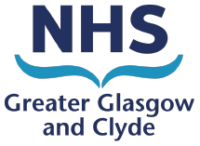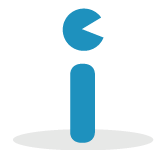The Armed Forces Community
Within NHS Greater Glasgow and Clyde (NHSGGC), we acknowledge the unique commitment demonstrated by the Armed Forces Community, which balances civilian roles within the organisation with military responsibilities or family ties. We value the unique skills and experience being part of this community brings to our organisation.
The Armed Forces Community encompasses both individuals who have served in the Armed Forces and individuals affiliated with the Armed Forces, including military family members and dependants. Therefore the Armed Forces Community includes Armed Forces regulars, Service leavers, Veterans, Armed Forces reservists, Cadets & Cadet Forces Adult Volunteers (CFAV) and Military spouses & dependants.
Therefore if you are a member of the Community in any way, we would ask you to register with the Board Contact: Diana Hudson, Staff Experience Adviser, Diana.Hudson@nhs.scot. This means, we can ensure you are kept up to date with the support that NHS Greater Glasgow and Clyde can offer.
When registering, we ask that you complete a short form and submit this to the Board Contact. By completing these details, we’re able to securely hold your contact details and will be used for the purposes of Armed Forces communication within the Board. Please get in touch with the Board Contact for a registration form.
The Armed Forces Covenant
NHS Greater Glasgow and Clyde (NHSGGC) affirmed its commitment to supporting serving personnel, Reservists, veterans, and military families by signing the Armed Forces Covenant. By signing the Covenant, we pledge our commitment to supporting the Armed Forces Community, recognising the value they contribute and acknowledging that serving personnel and military families should be treated with fairness and respect.
To help NHSGGC staff understand the Covenant and its implementation, a LearnPro module has been created. This module is available under the Specialist Subjects dropdown in the LearnPro system or by searching, “Understanding the Armed Forces Covenant”. The LearnPro system can be found using this link: learnPro NHS – Login
Reserve Forces
The regular training that the Reserve Forces undertake brings essential skills into the workplace such as leadership, communication, team working and organisational ability, which ultimately lead to improved performance in the workplace.
The Reserve Forces Training Policy is an established National NHS Scotland policy within our suite of workforce policies and we hope that we can be confident that all NHS Scotland employers are treating their staff who are members of the Reserve Forces equally.
If you want to find out more about what our reservists do, please watch the RAF Medical Reserves Employer Engagement Video.
The Armed Forces Talent Programme
We are actively engaged with the Armed Forces Talent Programme (AFTP) through a national working group, supporting the recruitment of Armed Forces leavers, and those from the wider community, into our workforce.
This fosters positive relationships, collaboration, and continued progress in supporting the Armed Forces Community.
To find out more about the Armed Forces Talent Programme, please visit their website.
The Defence Employer Recognition Scheme
The Employer Recognition Scheme (ERS) encourages employers to support members of our workforce who are part of the Armed Forces Community.
NHSGGC’s dedication to ensuring that all members of its workforce feel valued is evident, with a particular emphasis on supporting those who are part of the Armed Forces Community. The organisation’s communications and activities are carefully designed to celebrate and encourage this community, and we are delighted to be recognised for this work through achieving the Gold level in the Defence Employer Recognition Scheme.







